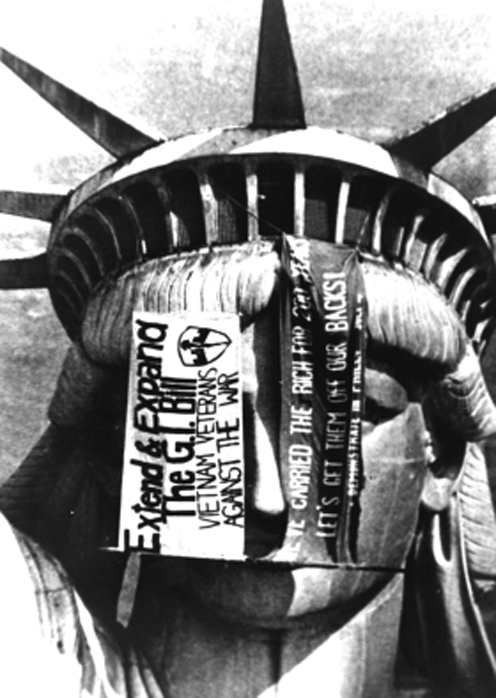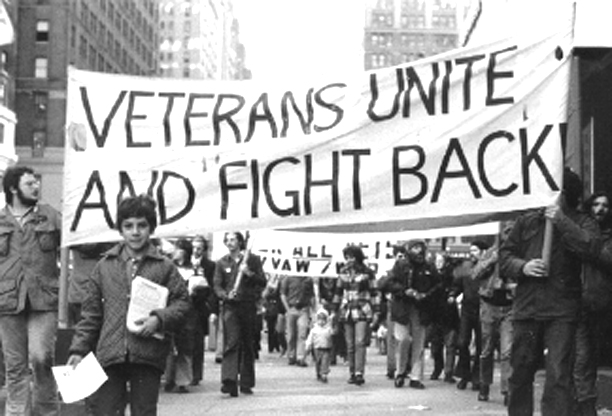 |
Winter Soldiers: An Oral History of Vietnam Veterans Against the WarBy Kurt Hilgendorf (reviewer)
Winter Soldiers: An Oral History of the Vietnam Veterans Against the War
Gary Okihiro, in Oral History and the Writing of Ethnic History, writes that "Oral History is not only a tool or method for recovering history; it is also a theory of history which maintains that the common folk and the dispossessed have a history and that this history must be written." No better approach could be applied to the history of Vietnam Veterans Against the War, an organization made up of thousands of returning veterans in the 1960s and 1970s who felt detached from, and often spurned by, the rest of American society, and an organization that for more than forty years has stood for justice for not only veterans but common people and the dispossessed writ large. Indeed, Richard Stacewicz's Winter Soldiers: An Oral History of the Vietnam Veterans Against the War provides the most insight into the backgrounds of VVAW members and the day-to-day struggles of members and chapters around the country of any of the books on VVAW, precisely because he gives voice to national leaders and local chapters, founding members and those who became involved toward the end of the war, women and men. The voices of those VVAW members included in Winter Soldiers describe an actively - and locally - engaged, decentralized organization, a group that not only organized and participated in large events over several years in the late 1960s and early 1970s, but one that also pushed for justice in communities across the United States. Winter Soldiers had been out of print for years and was somewhat difficult to acquire. Fortunately, it was re-released by Haymarket Books in September of this year. A book of this import demands to be read. Oral history is often derided in the academy as less than real history. Since it does not rely on primary source written or visual documents, many historians believe that oral history is less valid and reliable than traditional histories verified by newspaper or magazine reports, letters, photographs, video footage or official government documents. While documentation is important in establishing the facts of history, what happens when there is little documentary evidence of an event? Events still happened, and memories of those events, while potentially clouded by personal judgment or forgotten details, have historical relevance as powerful stories experienced first-hand. Even when documentary evidence about a particular event is plentiful, oral history allows us a much deeper look into what transpired. The people who were involved tell their interpretations of what happened, and critical readers can draw their own conclusions of the events, especially when presented with differing interpretations of the same activities, as Stacewicz does for many of the major VVAW actions. Perhaps just as importantly, oral history evades two significant drawbacks of traditional histories based on written documents. Since those defined as leaders or newsworthy are the ones covered by media (and government agents), traditional history overly focuses on those at the top. Furthermore, given the propagandistic nature of much of our media, many primary source accounts are often colored by ideological bias. Oral history is a natural counter to that ideological bias – who better than those who actually participated would know why they were there and what they intended to accomplish, the effects of oppositional activities, and the long-term impact of a group's work. An author's role in an oral history, then, is to tie interviews together to create a larger narrative, putting into context disparate accounts and creating a coherent whole. Stacewicz proves especially effective in weaving such a narrative. The true power of his account of VVAW, and why this book should be the starting point for anyone interested in VVAW's history, is Stacewicz's focus on two areas: 1) why VVAW members went to Vietnam and then joined the organization upon their return and 2) how the organization's development and activities outside of the national office demonstrated VVAW's true strength. As one reads the first chapter of Winter Soldiers s/he cannot help but recognize the commonalities between VVAW members' explanations for going to Vietnam: for most, patriotism and anticommunism; for many, a religious (and often specifically Catholic) upbringing. Many saw the service as chance to learn an employable skill. Many interviewed had desire to escape the boredom or drudgery of their immediate surroundings. In a foretelling of VVAW's later work, working class backgrounds and anti-racist sentiment are prevalent in members' upbringings. Stacewicz's deft editing and pacing make what could be considered unnecessary background information seem vibrant and engaging, and he puts these stories in their proper context of the dominant "Go America" discourse of the 1950s and 1960s. While other books on VVAW give time and space to soldiers' motivations for going to Vietnam, none of them go into such rich detail. Stacewicz is equally adept at identifying why veterans chose to join VVAW. Veterans' stories of their wartime experiences document both the rampant racism toward American soldiers of color and the Vietnamese and the way in which this racism allowed the committing of atrocities to be official policy. Contradictions were everywhere: soldiers could not possibly be fighting for democracy when brutality was the norm, either through their own actions or those of their alleged South Vietnamese allies, who were hated for their contempt toward their own people. Idealistic motivations that led these soldiers to Vietnam were exposed as misguided – the real enemy of their ideals was the war itself, and if those ideals were to be maintained, for these citizen-soldiers, action had to be taken. VVAW proved to be that outlet, a way for vets to heal themselves and to prevent others, both American and Vietnamese, from suffering the same fate in the future. It is precisely this element of VVAW, an organization made of regular people who are empowered to make change, that is such an important legacy; witnessing this analysis from those who were part of it makes Winter Soldiers an essential read. Mike McCain puts it succinctly: "We started understanding as a group of people [that] it was easier to be a Soldier than it was to be a critic of the government, of the state, of the society; but that if we were to be true citizens, that's what we had to do. You can't accept things at face value. You have to be a member of society. You have to argue. You have to decide whether or not something is right or wrong, and then once you've made that decision, act upon it. That was the biggest thing we did as an organization, and that's why so many people are alive today." McCain's analysis is telling, especially in regard to the often-anarchic nature of VVAW chapters' day-to-day operations. Stacewicz fills Winter Soldiers with robust accounts of how chapters formed and worked. Few returning vets had any previous activist or organizing experience, yet they felt compelled to do something to bring about an end to the war, for themselves, their fallen comrades and their country. As such, chapters throughout the country started working to oppose the war before they even called themselves VVAW, talking with returning vets, talking with GIs who were leaving for war, fomenting and supporting military resistance on bases, organizing for democracy within the military, attending anti-war rallies and speaking events. These local activities were heavy on symbolism and improvisation; decisions were made as needed by those involved with doing the work. It was precisely this local work that built the organization and kept members tied to the organization so that the most well known large events could even occur. Stacewicz's oral history, of all the books about VVAW, gives the most space to this vitally important chapter-level work, and the accounts included are often humorous, sometimes tragic and always insightful into how social change can be made. It could be argued that Stacewicz's comparatively light coverage of VVAW events like the Gainesville 8 trial or the Agent Orange lawsuit make Winter Soldiers less essential than books like Gerry Nicosia's Home to War, which goes into substantial detail about both legal battles. Such an argument, however, is predicated on the contention that only major stories are historically relevant. Indeed, oral history is designed to give a historical voice to those shut out of traditional histories, to tell those stories that should be heard. This is not to say that everything one might want to know is included in Winter Soldiers. More analysis of how the stress of the Gainesville 8 trial affected local chapters, for instance, or how the trial may have impacted the national office's turn toward ultra-leftism would be welcome and relevant for readers who are trying to sustain organizations during tough times. On the whole, though, such a criticism is a minor one. Stacewicz's approach makes Winter Soldiers the essential VVAW history –this book allows a reader to truly understand the gritty details of how the organization lived and breathed and struggled. One final benefit of oral history is that it provides a permanent record for those whose lives ended prematurely by ensuring that their stories will live on. We may no longer be able to speak with Jack McCloskey, Dave Cline, Bill Davis, Shelly Ramsdell or John Kniffin, but we can continue to learn from their insights. Here's to hoping that their work will inspire current and future generations to be those true patriots and citizens who fight for justice. Kurt Hilgendorf is a social studies teacher at John Hope College Prep High School in Chicago and a member of VVAW national staff.
|



